Ancient History looks at every aspect of the ancient world: you'll find articles covering politics, society, literature, language, religion, economics, and art - all in one magazine! Like its big brother, Ancient Warfare, Ancient History Magazine is a bi-monthly, 60-page magazine that relies on a thematic approach: each issue is centered around one specific subject. From ancient Egyptian trade and Roman family life to the lost city of Pompeii, there's sure to be something for everyone - all presented in a well-researched but accessible, fun manner.
Ancient History Magazine
PRELIMINARIES
Oldest Chinese 'celestial book' discovered
Hellenistic temple found on older Sumerian site
Earth's magnetic field trapped in ancient bricks
Faces of Aphrodite and Dionysos see daylight again
Spectacular shell mosaic revealed in a domus on Palatine Hill
Nordic Bronze Age hall unearthed in Germany
Tough lives for ancient Egypt's venerated baboons
PAPYROLOGISTS & POLICEMEN • Few papyrological discoveries have created more debate than the Artemidorus Papyrus. It may be a fake, but during the discussion, many people learned what radiocarbon analysis and spectroscopy can and cannot do.
DEAD MAN WALKING • Regarding the events surrounding the death of an individual, whether by natural means or homicide, it was normally conceded to the family of the deceased to deal with both the religious and legal matters concerning the situation. Nevertheless, as with many aspects of Athenian life, there existed tight statutory controls, particularly when homicide, whether accidental or deliberate, had occurred. A specific process was required to emphatically expunge any ritual pollution.
Women in homicide trials
LOST AND FOUND? • The Kingdom of the Hittites is often described as ‘the land of a thousand Gods’ and, indeed, from contemporary texts we know of countless deities who were worshipped. While there is evidence for the existence of large Hittite statues, none have ever been found. What happened to them?
IN SEARCH OF THE CELTIC HEADHUNTERS • The writings of numerous Classical authors give us the impression that the Celts, their uncivilized northern neighbours, were notorious headhunters. The work of archaeologists over the last century has added greatly to the picture, with the discovery of dramatic iconographic depictions of severed heads and deposits of human skulls in pits, ditches, and amid other debris in Iron Age settlements. But how common was headhunting in Iron Age Europe?
FIGHTING TOOTH AND CLAW • People in the Roman world flocked to arenas across the empire to watch life-or-death fights. Although many of these fights pitted two human gladiators against each other, it was not unusual to find animals also involved in the games. Audiences, particularly in Rome, were able to see a vast range of animals in the arena, from northern European bears to lions, elephants, ostriches, and even giraffes. But how did these creatures end up in the arena, and what happened to them once they were there?
Fame and fortune
IMPOSING ORDER ONTO CHAOS • A core philosophy of the ancient Egyptians was the preservations of maat against isfet — order against chaos. Hunting was one way the Egyptians believed they could impose order on chaos; another was warfare. Hunting and warfare were, therefore, intimately linked in Egyptian thought.
The concept of Maat
THE HUNT FOR ELEPHANTS • Following the death of Alexander of Macedon in 323 BC many of his chief officers scrambled for control of the territories he had conquered. This competition spurred the ancient equivalent of an arms race, including the establishment of large elephant corps. In Egypt, hunters would travel beyond the Nile valley in search of elephants for the Ptolemaic...
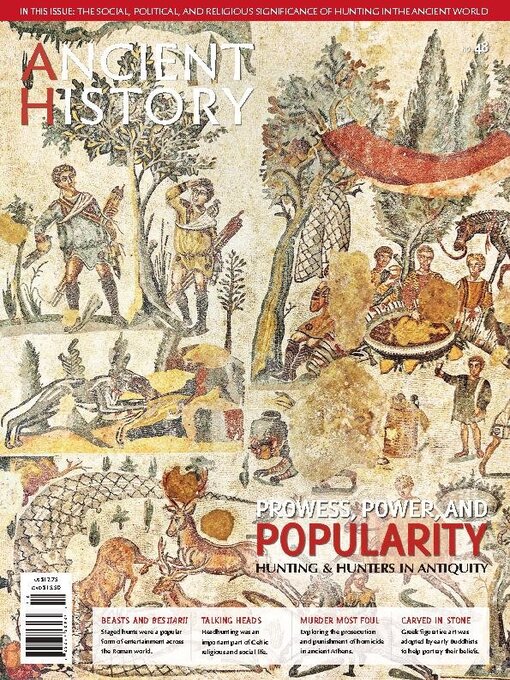
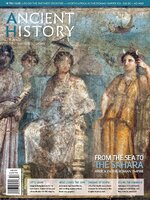 AH 52
AH 52
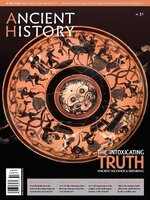 AH 51
AH 51
 AH 50
AH 50
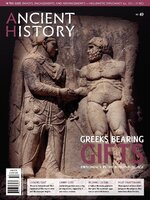 AH 49
AH 49
 AH 48
AH 48
 AH 47
AH 47
 AH 46
AH 46
 AH 45
AH 45
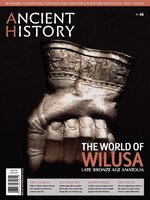 AH 44
AH 44
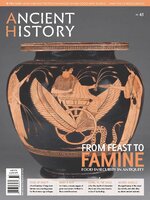 AH 43
AH 43
 AH 42
AH 42
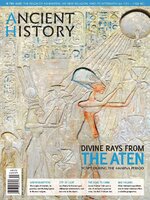 AH 41
AH 41
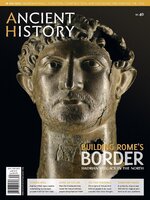 AH 40
AH 40
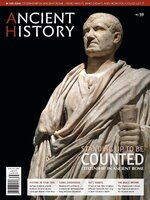 AH 39
AH 39
 AH 38
AH 38
 AH 37
AH 37
 AH 36
AH 36
 AH 35
AH 35
